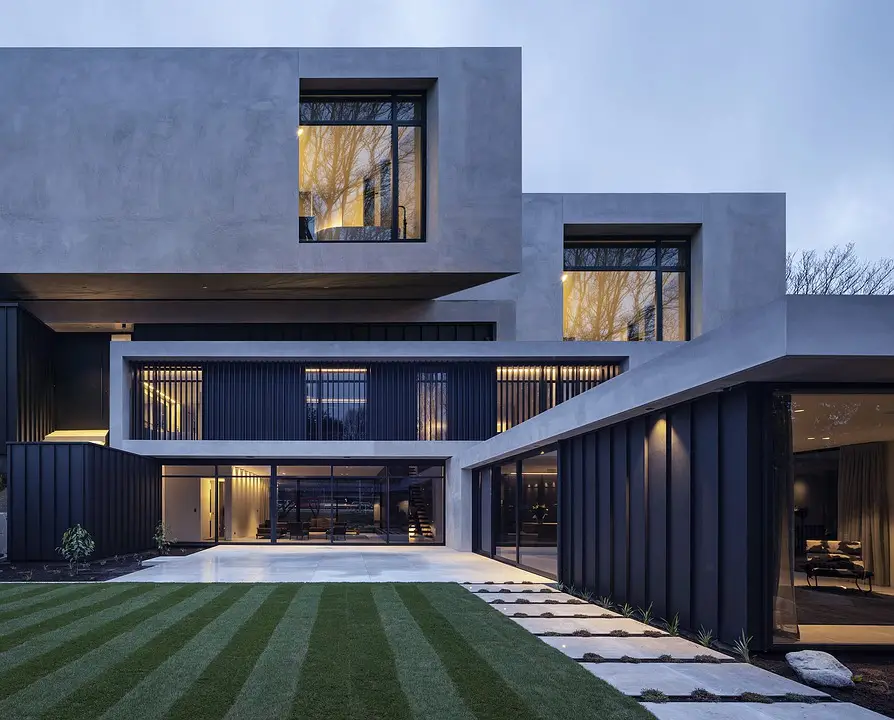Today minimalistic architecture dominates the design of modern homes. In line with this evolving trend, landscape architects and designers also need to develop styles that conform to the overall appearance and design scheme.
Are you looking for some inspiration for designing a perfect minimalistic landscape?
Here are some great ideas to set you up for a great start.
Go For Neutral Color Themes
When styling outdoor space with a modern feel, you ought to stick to a neutral color theme. Choose from shades of beige, brown, or gray. Vibrant colors are a strict NO!
Awnings to the patio seating (and the cushions), everything should conform to a monochrome color palette. For instance, if the furniture is gray-colored, the awning frame and fabric should also be a shade of gray. Contact an awning supplier who specializes in modern landscaping style to get your choice in neutral colors.
Embrace Symmetry And Defined Lines
Natural curves and gradients dominate traditional landscape design. On the other hand, modern landscaping is more defined, with a preference for geometric and symmetric forms.
To create a perfect modern landscape, plant shrubs along the borders and in straight lines. To add variety, break the lines with square beds of flowering plants at regular intervals or corners.
Avoid using natural stones or pebbles in the design. Instead, use stone or wooden blocks to match up to the modern minimalistic look you’re trying to achieve.
Choose Plants That Add Personality To The Space
Don’t go on planting random plants and shrubs. They’ll just make the space look chaotic.
To accomplish a pleasant modern landscape design, select plants and trees that will serve as live sculptures. Trees that naturally have an unusual form like Crepe Myrtle or Birch are excellent options. Tree Aloe and Cycads are also popular choices because they’re slow-growing and drought resistant.
Limit the number of trees to just two or three. Flowers should be a bare minimum too. Bring in a variety of perennial shrubs and plants like bamboo and pines
Choose trees and plants that are evergreen and don’t shed during the fall season. Native plants will be easier to obtain, grow and maintain.
The idea is to avoid any bold eye-catching plants and includes only subtle pleasing greenery.
Keep It Functional
No matter how big your outdoor space is, keep the design uncluttered. Use fewer elements and leave more open space.
Line the plants along the border only. Another option is to plant them in steps along one edge.
Make ample use of hardscaping features like concrete or other types of hard flooring, patio, deck, pathways, etc. All these features complement the functional use of space.
Use a little variety in the texture of hard materials to add subtle visual interest. You can use bricks, concrete blocks, tiles, and pavers.
Avoid Ornamental Elements
When it comes to minimalist landscaping, functionality trumps aesthetics. Always.
A rose garden or a sprawling lawn hardly serves any purpose. Besides you want to reduce maintenance by eliminating the need for weeding and lawn mowing.
There should be no water fountains, ornamental sculptures, or ornate metal furniture.
A simple bird feeder and a couple of large-sized pots will do the trick of breaking the monotony.
If you want to include a water feature, be careful to keep the design muted. A simple water feature like a shallow controlled stream or a water wall effortlessly blends with the entire space.
Conclusion
Modern minimalist landscapes are simple, functional, and elegant. They add a familiar charm to the outdoor space and complement modern architecture very well.
While innovation and variety are great, remember not to lose track of the fundamental principle – less is more when designing a minimalist landscape for the first time.

